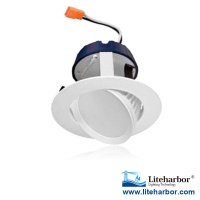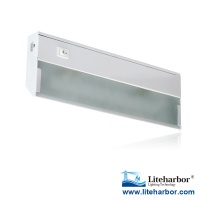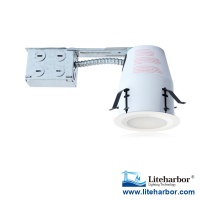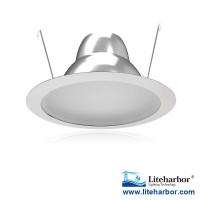Xenon Vs. Halogen
Most of us aren't chemists. So, terms like "xenon lighting" or "halogen lamps" might make vague images of the Periodic Table come to mind, or hearken back to the hazy days of high school science class, but that's about it. One thing's for sure, these loosely sci-fi-ish words don't seem like common household objects. But, many of us use them every day.
As commercial or residential lights, both halogen and xenon lamps have many benefits. But how to choose between them? Read on to compare the pros and cons of halogen and xenon light bulbs.
In order to understand the nuances of xenon and halogen light bulbs, let's first cover the basics:
Both xenon and halogen light bulbs are kinds of incandescent lights. They have a thin tungsten filament within their glass envelope, and when electricity flows through it, it heats up until the filament glows white hot and produces light.
Xenon and halogen lamps get their names from the kinds of gases added within the light bulb's glass envelope.
Why add gas? Well, regular incandescent light bulbs have vacuums within their envelopes because air oxidizes the glowing tungsten. An inert gas, like xenon or a halogen, slows down this process, prolonging the life of the light bulb. The large gas molecules deflect the tungsten molecules; slowing their rate of evaporation and making the filament last longer.
Now that we've established the essentials, let's discuss how xenon and halogen light bulbs differ.
Gases
A halogen is a monovalent element on the Periodic Table, which easily forms negative ions. There are 5 such halogens - fluorine, chlorine, bromide, iodine, and astatine - but only iodine and bromide are used in lamps. In a halogen light bulb, the filament wears down, shedding tungsten atoms over time. These discarded atoms unite with the halogen gas molecules in the lamp forming tungsten halide, which is then redeposited on the filament. This lengthens lamp life, and prevents blackening.
Xenon is one of the noble gases on the Periodic Table, and it's odorless and colorless. It works in much the same way as the halogen gases when retarding the filament's evaporation, but it also produces a bright-white light when stimulated by electricity. Xenon is a more expensive material than any of the halogens.
Efficiency
Both xenon and halogen lamps are more efficient than regular incandescent lamps, but there's quite a discrepancy between the two.
A halogen lamp's typical rated life is about 2,000 hours, which is about 2 times longer than that of standard incandescent lights. On average, they produce 10-35 lumens per watt, while an incandescent produces only 8-24. One thing to note: Halogen lights produce the most heat of almost any other light source, and much of the energy they use is given off as heat. If you choose only halogen lights to illuminate a room, you may have to compensate for this heat with air conditioning
A xenon light's typical rated life is around 10,000 hours, lasting 5 times longer than the average halogen lamp. Because xenon gas glows when excited by electricity, it also takes less energy to achieve the same lumen output. Xenon gas also requires less heat to produce light, so you don't have to worry about such high energy bills.
Sensitivity
It's no secret halogen lights run hot, which means they're not suitable for every application. They could possibly damage sensitive artwork or displays with their high temperatures and UV emissions, and could be potentially hazardous if used to light high traffic or enclosed areas like kitchen cabinets.
The halogen light bulbs themselves are also rather delicate. We don't recommend touching them with bare hands, even when cool. The oil your hands leave behind on the glass will eventually heat up and may cause an imbalance, making the light bulb rupture.
Xenon light bulbs don't produce as much heat, and emit minimal UV rays. This means they're safer to use in fragile and high traffic applications. They're also much more durable – oil doesn't affect their performance, and they can even withstand unstable voltages.
Color
Both halogen and xenon light bulbs have perfect CRIs (color rendering indexes) of 100. That means they both portray colors very accurately.
Halogen lights emit a crisp white light, while xenon lights offer a slightly warmer color temperature. Both are cooler than the average incandescent light.
Uses
With flattering colors and easy dimming capabilities, halogen and xenon lamps are both great choices to light your home or building.
Halogen lights can be used as accent lights, display lights, and recessed downlights, to name a few. As long as the area of use is fairly tranquil, their performance is quite pleasing.
To start with, xenon lights are perfect for under cabinet lighting, task lighting, cove lighting, and also accent lighting.
It's easy to switch out your halogen lights for xenon or vice versa, just remember the following:
1. The lamps should have the same wattage and voltage ratings.
2. The lamps should have the same type of base (bipin, wedge, festoon, etc.)
3. The lamps' glass envelopes should be the same shape and size.

 RESOURCE
RESOURCE




